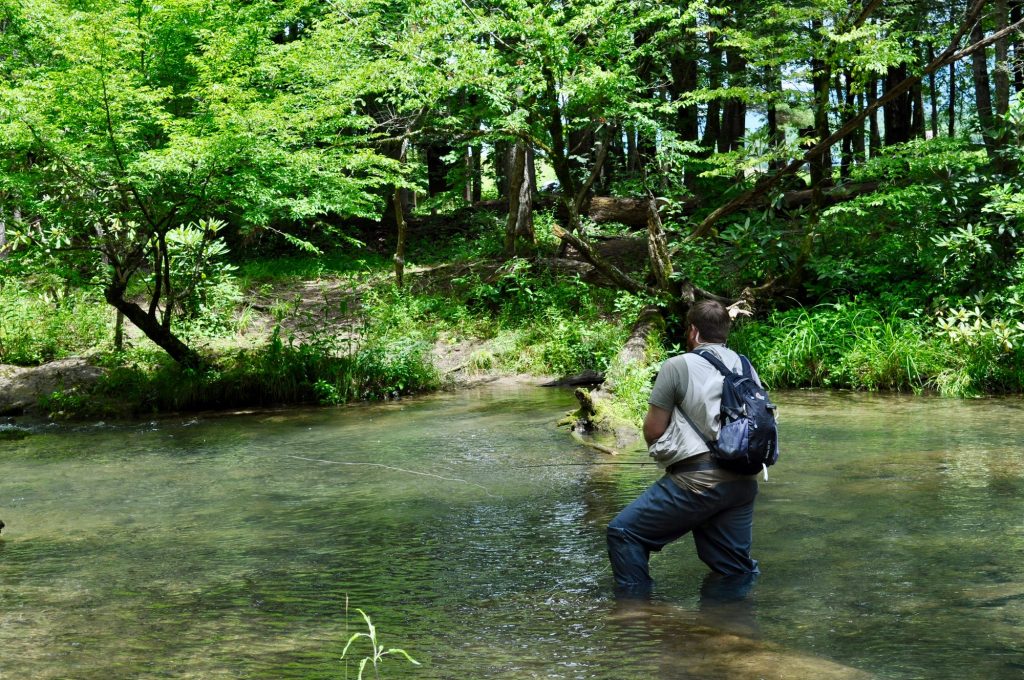Are you intrigued by the art of freshwater fly fishing? This comprehensive guide is tailored to both beginners and seasoned anglers looking to deepen their understanding of this fascinating sport. Join us as we delve into the world of freshwater fly fishing, exploring techniques, tips, and the sheer joy it brings.
What is Freshwater Fly Fishing?
Freshwater fly fishing is a method of angling that uses a lightweight lure—known as a fly—to catch fish. Unlike traditional fishing, fly fishing involves casting a nearly weightless fly with a specialized rod and line. It’s an art that combines skill, patience, and a deep appreciation for nature.

Understanding the Basics
Gear Essentials
- Fly Rod: Your primary tool, available in various lengths and weights.
- Fly Reel: A simple mechanism used to hold the fly line.
- Fly Line: Specially designed to cast flies at a distance.
- Leader and Tippet: Clear lines that connect the fly to the fly line.
- Flies: The lure used in fly fishing, imitating insects or other prey.
The Art of Casting
- Overhead Cast: The most basic and commonly used cast in fly fishing.
- Roll Cast: Ideal for tight spots with limited backcasting room.
- Double Haul: A technique for longer, more powerful casts.
Fly Fishing Techniques
Dry Fly Fishing
This technique involves using a fly that floats on the water’s surface, imitating an adult insect. It’s visually exciting and requires precise timing.
Nymphing
Nymphing targets fish feeding underwater. It uses a weighted fly to sink below the surface, mimicking an immature insect.
Streamer Fishing
Streamer fishing involves using larger flies that imitate small fish or large insects, perfect for targeting bigger fish.
Choosing the Right Location
Understanding Water Types
- Rivers and Streams: Flowing waters with diverse fish populations.
- Lakes and Ponds: Still waters requiring different tactics.
Reading the Water
Learn to identify feeding zones like riffles, pools, and runs where fish are likely to be found.
Advanced Tips and Tricks
Mastering Fly Selection
- Understand insect hatches and choose flies accordingly.
- Experiment with different sizes and colors.
Fine-Tuning Techniques
- Practice stealth and approach the water quietly.
- Learn to adjust your casting technique based on wind and water conditions.
Conservation and Ethics
Catch and Release
Practice catch and release to maintain fish populations and ecological balance.
Environmental Stewardship
Respect nature, follow local regulations, and leave no trace.
Conclusion
Freshwater fly fishing is more than a sport; it’s a journey into the heart of nature. With patience and practice, you can master this ancient art, creating unforgettable experiences in the great outdoors.
FAQs
- What is the best time of year for freshwater fly fishing?
The best time varies depending on location and species, but generally, spring and fall offer optimal conditions. - Do I need a license for freshwater fly fishing?
Yes, most locations require a fishing license. Check local regulations. - Can beginners start with fly fishing?
Absolutely! It’s a learning process, but beginners can enjoy fly fishing with the right guidance. - What are the common species targeted in freshwater fly fishing?
Trout, bass, and salmon are among the most common. - How can I learn fly fishing effectively?
Start with basic gear, take lessons, and practice regularly.

